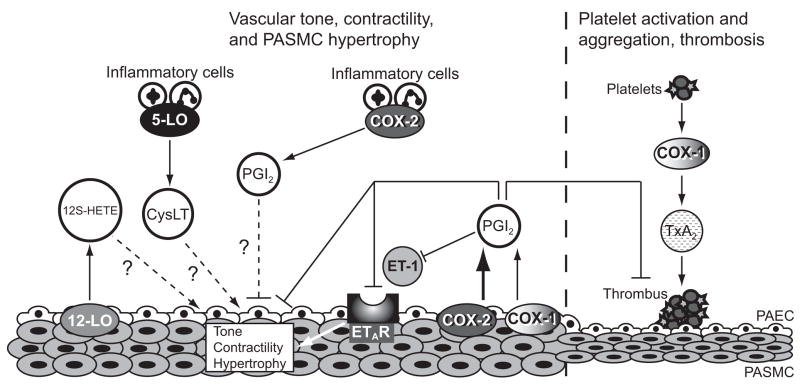Figure 4.
Role of COX-2 in hypoxia-induced pulmonary hypertension and pulmonary vascular remodeling. COX-2 is upregulated in PASMC following hypoxia leading to enhanced synthesis of PGI2 in the endothelium of pulmonary arteries. COX-2-derived PGI2 inhibits platelet aggregation and subsequent thrombus formation and promotes vasodilation. Inhibition of COX-2 during hypoxia leads to increased thrombosis that is TXA2 dependent. In addition, our data suggest that COX-2-derived PGI2 decreases ETAR expression leading to attenuation of ET-1-induced PASMC contractility and hypertrophy. COX-2 is also highly induced in inflammatory cells following hypoxia and may play a role in modulating PASMC remodeling in a paracrine fashion. Alternative metabolites of arachidonic acid, including cysLT and 12S-HETE, may exacerbate pulmonary vascular remodeling in the absence of COX-2 via modulation of PASMC proliferation and vascular tone. Arrows (→) denote an increase in the indicated downstream mediator; flat arrowheads (⊥) indicate an inhibition or a decrease in concentration; dashed lines (···) indicate a proposed mechanism. PGI2, prostaglandin I2; ET-1 endothelin-1; TXA2, thromboxane A2; 12S-HETE, 12S-hydroxyeicosatetraenoic acid; cysLT, cysteinyl leukotrienes; ETAR, endothelin A receptor; PASMC, pulmonary artery smooth muscle cells; PAEC, pulmonary artery endothelial cells.

